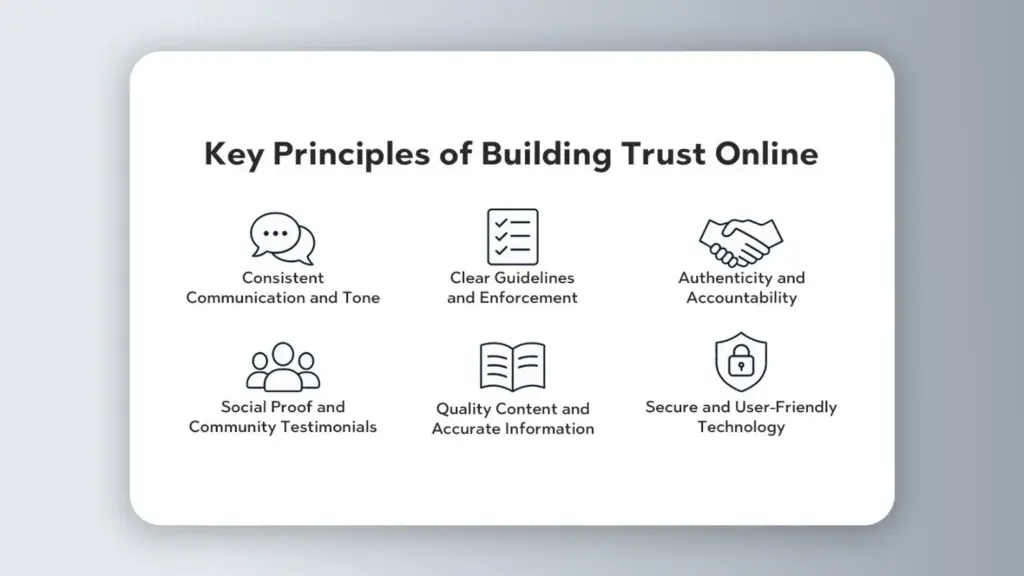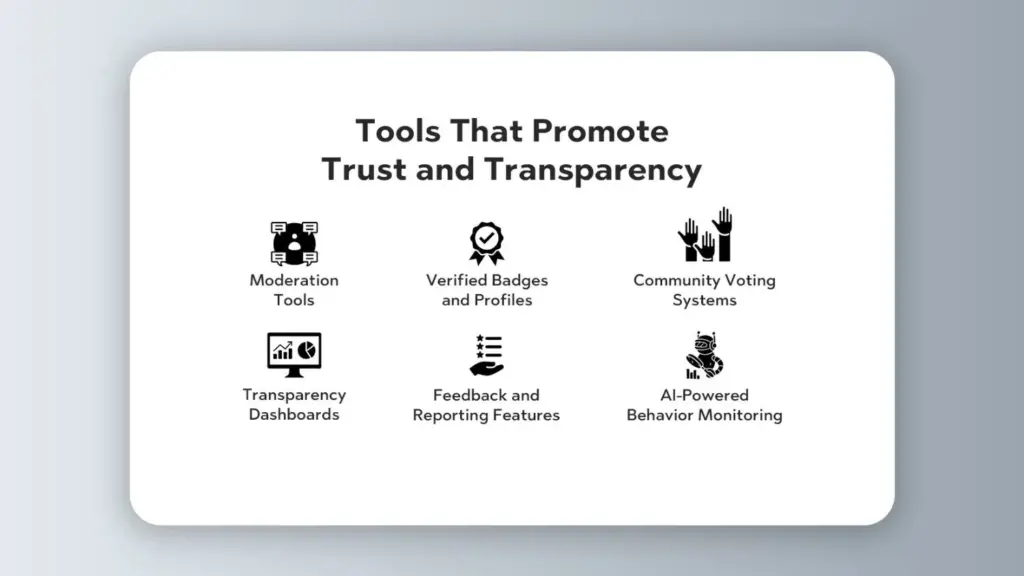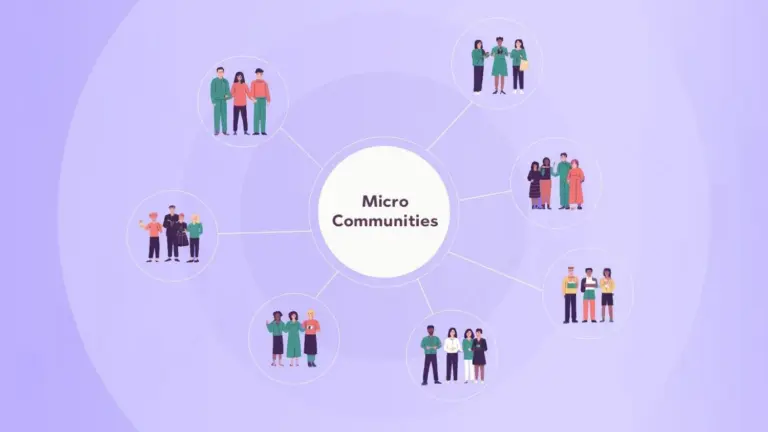How to Foster Trust and Transparency in Online Communities
In today’s hyper-digital landscape, trust and transparency are more than just buzzwords—they’re non-negotiables. When it comes to online communities, these two pillars determine whether your platform becomes a thriving ecosystem or a fleeting trend. With so many platforms vying for attention, people gravitate toward communities where they feel safe, respected, and valued. Building trust in online platforms isn’t just about data privacy or secure logins—it’s about authenticity, accountability, and consistent communication.
At Thrico, we understand the importance of cultivating authentic, transparent online spaces that go beyond functionality to foster belonging. This blog explores the strategies, tools, and mindset shifts necessary to establish and maintain trust in online communities.
Why Trust and Transparency Are Essential for Online Communities
Trust in online communities is the emotional glue that binds members to each other and to the platform itself. Without it, engagement crumbles. Transparency in community building, meanwhile, is what gives members confidence in leadership decisions, guidelines, and community direction. When combined, trust and transparency unlock deeper engagement, greater loyalty, and long-term resilience.
1. Fostering Engagement and Participation
People are naturally cautious in online environments. When members trust the intentions and structure of the platform, they participate more fully—they contribute to discussions, attend events, and offer valuable feedback. Transparency in decision-making and policies gives members the confidence that their contributions won’t be used against them or ignored entirely.
2. Building a Positive and Safe Environment
Trust creates a safe space for vulnerability. Online communities, especially those around sensitive topics or personal interests, require environments where members can express themselves without fear. Transparency from moderators and platform managers reassures users that their voices are respected and that there are checks and balances in place.
3. Promoting Accountability and Sustainability
Without accountability, communities can spiral into toxicity. Transparency in rules, enforcement, and platform changes keeps everyone informed and on the same page. Trust allows users to give honest feedback and helps admins implement improvements in alignment with community values.
4. Strengthening Relationships and Loyalty
When community members see consistent actions and open communication from leaders, it strengthens emotional bonds. That shared sense of purpose translates into advocacy, peer-to-peer support, and long-term retention.
In essence, trust and transparency create a feedback loop. The more members trust the platform and its leadership, the more willing they are to engage, which further strengthens community ties.
Key Principles of Building Trust Online
Creating trust in online platforms requires more than ethical intentions—it demands a deliberate framework built around user experience, clarity, and communication.

1. Consistent Communication and Tone
Consistency builds predictability, and predictability builds trust. Keep your tone professional yet approachable, and ensure your messaging aligns with your community’s values. Sudden changes in tone, especially during conflict, can confuse and alienate users.
2. Clear Guidelines and Enforcement
People trust what they understand. Publish clear community guidelines that outline acceptable behavior, content standards, and the consequences of violations. More importantly, enforce these rules fairly and consistently across all user groups.
3. Authenticity and Accountability
Communities are quick to spot performative gestures. Whether it’s a brand ambassador or a community moderator, authenticity matters. Leaders should model the behavior they expect. If mistakes are made, acknowledge them, correct the course, and move forward transparently.
4. Social Proof and Community Testimonials
People trust other people. Use testimonials, user-generated content, and peer reviews to demonstrate how others experience your platform. Highlight success stories or spotlight long-standing community members.
5. Quality Content and Accurate Information
Make sure every piece of content shared on your platform is accurate, relevant, and valuable. This shows that you respect your members’ time and intelligence. Misinformation erodes trust instantly.
6. Secure and User-Friendly Technology
Trust also depends on usability. A platform that frequently crashes, loses data, or exposes user information will struggle to retain users. Ensure data privacy, secure logins, and accessible design are part of your foundation.
By grounding your community in these principles, you create an environment where trust isn’t demanded—it’s earned.
Strategies to Improve Transparency in Online Spaces
Transparency in community building isn’t just about telling members what you’re doing—it’s about showing them how and why you’re doing it. Here’s how to ensure your actions reflect your intentions:
1. Share the Decision-Making Process
Whether it’s introducing a new feature or changing a community policy, bring members into the conversation early. Host polls, open comment threads, or virtual town halls. Let users vote or voice opinions. Even if their ideas aren’t implemented, the process shows respect.
2. Address Mistakes Openly
When something goes wrong—and it will—own it. Publish a post explaining what happened, what went wrong, and how it will be fixed. Transparency during failure is often more impactful than during success.
3. Create Open Feedback Loops
Use public channels to gather and respond to feedback. Whether it’s a suggestions forum or a dedicated AMA thread, visible exchanges build trust. Follow through by updating the community when changes are made based on feedback.
4. Highlight Your People
Transparency improves when people see the faces behind decisions. Use “Meet the Team” posts, behind-the-scenes videos, or employee spotlights to humanize your platform.
5. Policy and Product Transparency
Be upfront about your data policies, monetization strategy, and moderation approach. Offer plain-language explanations of how you handle content removal, data privacy, and algorithm changes.
6. Share Your Roadmap
Publish a quarterly or bi-annual roadmap. What’s coming next? What’s being retired? What ideas are under review? Involving members in this journey gives them a sense of co-ownership.
Transparency isn’t about having all the answers—it’s about being honest about the process.
Tools That Promote Trust and Transparency
The tools you choose to build and manage your community matter. They become the infrastructure of your transparency efforts.

1. Moderation Tools
Automated and human moderation tools help keep communities safe and respectful. These tools allow you to flag inappropriate content, detect spam, and ensure rules are enforced uniformly.
2. Verified Badges and Profiles
Giving users the option to verify their identity or role builds credibility. Badges for moderators, brand ambassadors, or subject matter experts clarify authority and reduce impersonation.
3. Community Voting Systems
Let members vote on feature requests, community changes, or content quality. Voting shows that their voice matters and adds democratic input to platform development.
4. Transparency Dashboards
Some platforms include dashboards that display moderation stats, response times, and policy changes. This creates a culture of openness around the health of the community.
5. Feedback and Reporting Features
Built-in feedback buttons, issue trackers, and reporting tools make it easy for users to raise concerns or suggest improvements. Integrate follow-up tools so users see what happens with their input.
6. AI-Powered Behavior Monitoring
While still emerging, AI tools can help detect abusive behavior, misinformation, or off-topic spam. These should supplement, not replace, human moderation.
Investing in the right tools shows a commitment to maintaining both trust and transparency.
Real-Life Examples of Transparent Communities
Several online communities have become known for their commitment to transparency and member trust
1. Thrico
As a platform owned and managed directly by your brand, Thrico gives full control over data, community experience, and moderation. Its transparency isn’t just operational; it’s cultural. Every feature, from Spotlight to Celebrations, reflects a commitment to openness. Thrico provides unmatched ownership and clarity of first-party data for brands and associations looking to cultivate authentic engagement.
2. Reddit
Reddit’s upvote/downvote system, AMA sessions with leadership, and open source policies promote community-driven content and visibility. While moderation varies, its structure allows community-led transparency.
3. GitHub
As a development platform, GitHub excels at transparency. Code is open source, changes are tracked, and community discussion is central to platform evolution.
4. Discord Communities
Though Discord is primarily a communication tool, many communities use channels, pinned messages, and community guidelines to maintain clear, open governance.
5. Stack Overflow
Reputation points, transparent voting, and clearly explained moderation decisions all contribute to a strong sense of community fairness and credibility.
These communities prove that transparency isn’t theoretical—it’s practical, scalable, and vital.
Challenges in Maintaining Trust Over Time
Trust is easy to lose and hard to rebuild. Here are the most common challenges:
1. Dealing with Trolls and Misinformation
Bad actors can test your community’s limits. Use strong moderation policies and clear consequences. Transparency about your enforcement process helps others feel safe.
2. Addressing Internal Bias
If members perceive bias from leaders or moderators, trust erodes quickly. Use diverse moderation teams and public decision logs to show fairness.
3. Handling Conflict or Mismanagement
When leadership misstep, it’s tempting to hide it. Instead, acknowledge the issue, communicate openly, and invite members into the resolution process.
4. Adapting to Growth
As communities grow, old systems may not scale. Transparent updates and iterative changes will help manage expectations.
Maintaining trust is a long-term project—one built on honesty, responsiveness, and empathy.
Final Tips: Building a Culture of Openness and Accountability
Fostering a transparent, trustworthy community isn’t about perfection—it’s about progress. Here are the final tips:
- Be Consistent: Keep your promises, stick to your rules, and communicate proactively.
- Lead Authentically: Be honest about challenges. Let your community see your humanity.
- Celebrate Feedback: Show gratitude for community insights, even when they’re critical.
- Train Your Moderators: Equip your team to lead with empathy, fairness, and clarity.
- Use the Right Tools: Support your values with technology that reinforces them.
- Think Long-Term: Building trust takes time. Don’t shortcut it.
Online trust is earned one interaction at a time. Transparency is what makes that trust visible.
FAQs
Because trust builds connection, fuels participation, and ensures sustainability. Without it, communities fracture.
Share decisions, invite feedback, admit mistakes, and offer consistent, clear communication.
By enforcing rules fairly, being transparent about decisions, and engaging with empathy.
Reddit, GitHub, and Stack Overflow stand out for their transparency, feedback systems, and community governance.
Own the issue, communicate openly, and involve members in corrective actions.
Moderation tools, voting systems, transparency dashboards, verified badges, and open feedback channels.
Yes, AI can assist with behavior monitoring and misinformation detection—but it should complement, not replace, human moderation.
Clear guidelines help members understand expectations, reduce ambiguity, and create a fair, consistent environment for everyone.






